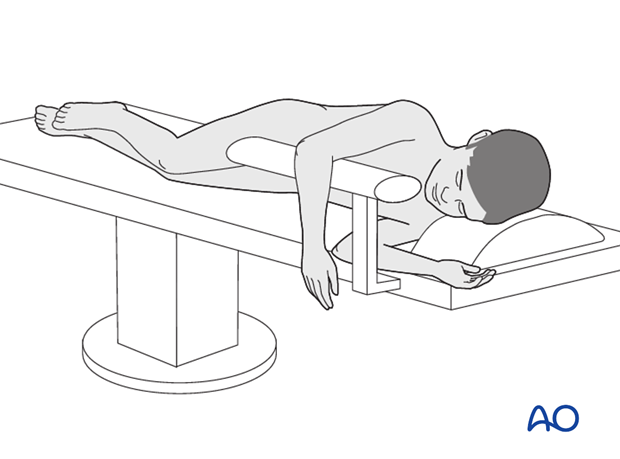Lateral decubitus position
1. Introduction
Advantages
- Good position for posterior access to the elbow region (eg, Y-fracture)
- Flexion is possible over 110°
- Reduced risk of contamination of the hanging hand
- Straightforward for anesthesia
Disadvantages
- Use of the C-arm is more difficult
- Less suitable for children below 6-8 years due to short upper arm
This position is unsuitable for closed management of supracondylar fractures, as it is difficult to manipulate the fracture with the patient in a lateral decubitus position.
2. Preoperative preparation
Consider the additional material on preoperative preparation.
3. Patient positioning
The patient is positioned in a lateral decubitus position on the uninjured side, as close as possible to the edge of the table, with trunk support front and back.
The contralateral shoulder must be positioned so as to prevent brachial plexus injury.
The injured arm is placed either on a gutter support beneath the upper arm, or over a padded arm roll under the elbow.













